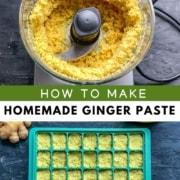For those who’re searching for an easy meal prep alternative to freshly minced ginger, you’re going to like this easy recipe for homemade ginger paste or puree.
Made with just 2 ingredients, it’s an easy strategy to at all times ensure that you may have fresh ginger available. Stores for as much as 6 months within the freezer!
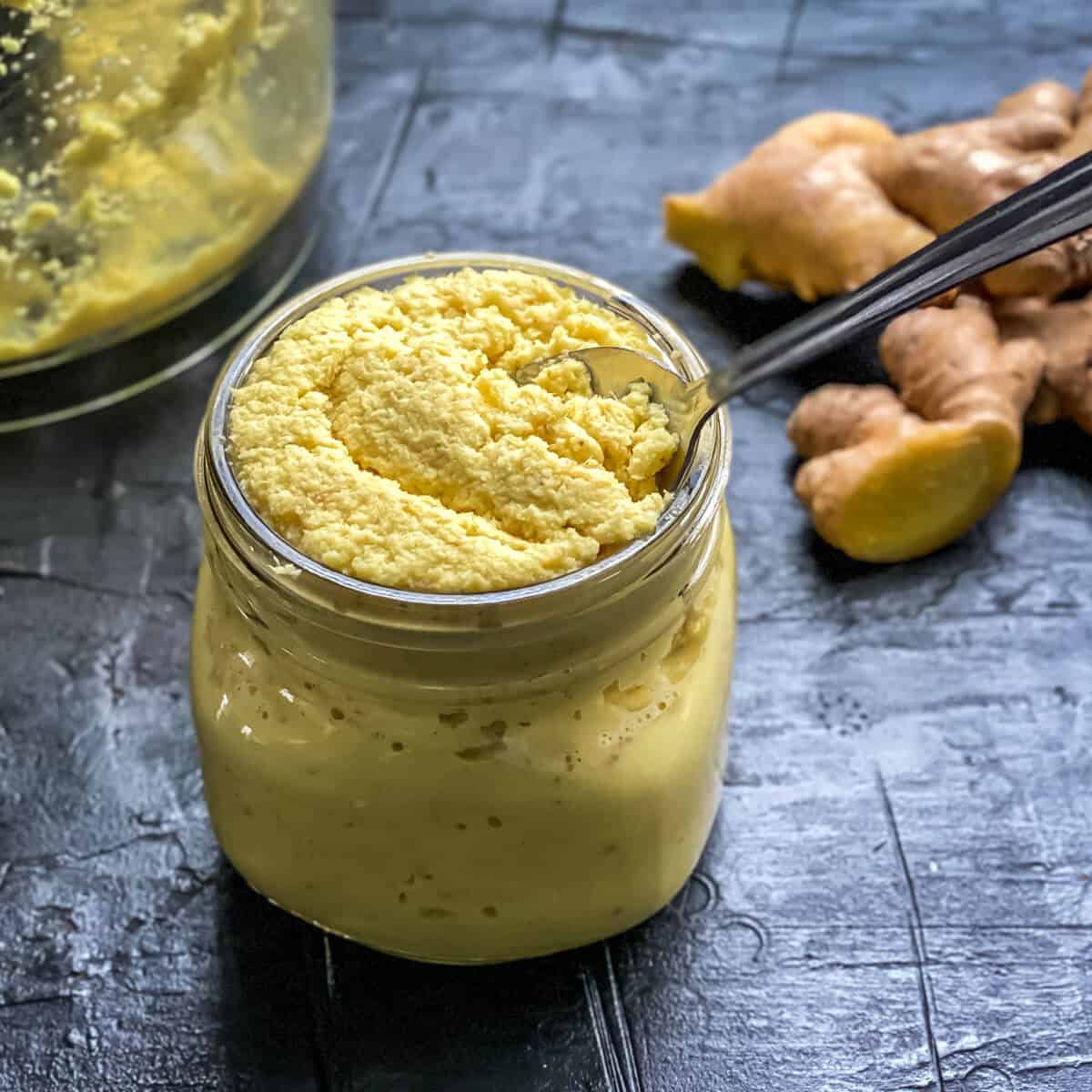
My family loves eating freshly cooked meals every day. So as to find time to make the dishes they love, I’ve learned a number of time-saving meal prepping tricks and shortcuts to make preparing our favourite meals a bit of bit easier.
Considered one of those shortcuts is making ginger paste at home.
Using this homemade ginger paste in my kitchen saves me a number of minutes per meal, and people minutes really add up! Especially when paired with other time-saving meal prep recipes like my ginger-garlic paste, garlic paste, and bhuna masala.
Using ginger paste gives you the entire flavors of fresh ginger root, without the entire peeling, chopping, and grating.
This essential ingredient is a staple in lots of cuisines, particularly Indian food and Asian recipes. It’s surprisingly easy to make, and the spicy ginger flavor it adds to dishes is incomparable to store-bought ginger paste.
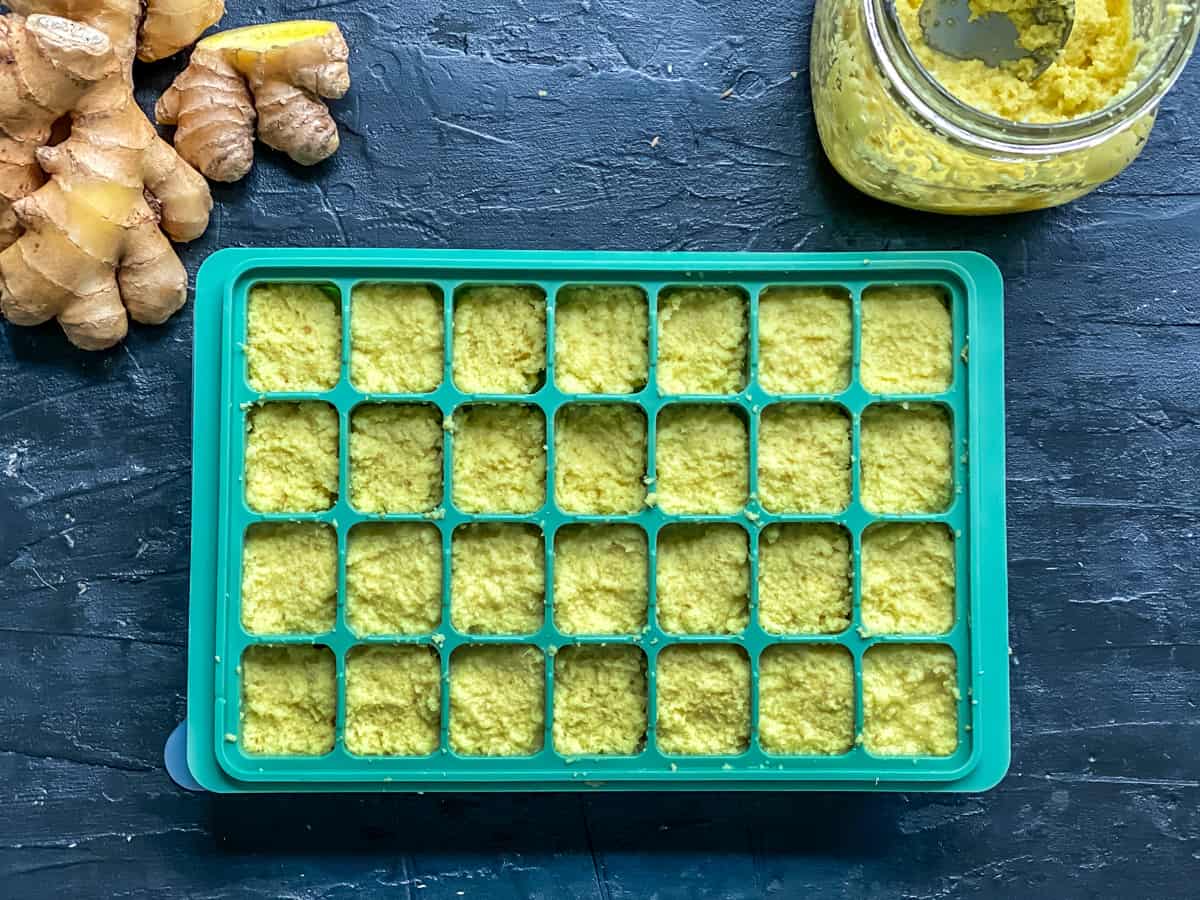
What’s ginger paste?
Fresh ginger paste is made by mixing chopped (and sometimes peeled) ginger right into a positive paste. It often uses water or oil in the method to create a smooth consistency. It has a robust flavor that’s similar to that of fresh ginger and may be preserved for as much as 6 months when stored within the freezer.
The ginger paste may be used as a fresh ginger substitute and has a really positive texture. It is ideal for tea, curries, and sauces.
Advantages
Fresh ginger has been used medicinally for hundreds of years and continues for use to treat quite a lot of conditions and ailments. Ginger is loaded with antioxidants and is taken into account anti-inflammatory. It is usually used to treat nausea and has also been shown to lower each cholesterol and blood pressure levels.
Read more: 11 Health Advantages of Ginger
Ginger and its forms
Ginger is a quite common ingredient in Indian cooking and is utilized in an awesome number of cuisines everywhere in the world. While it’s most frequently used fresh, there are several different forms available that make getting a delicious ginger flavor very easy.
Puree – Pureed ginger (also often known as ginger paste) is made by mixing or grinding fresh peeled ginger right into a positive puree. Some water (or occasionally oil) is used to create a smooth consistency.
Ground – That is ginger that has been dried or dehydrated and ground to a positive powder. That is most frequently present in the spices and seasoning section of the food market, but it might probably even be present in the majority foods section.
Minced – Minced ginger is sold in jars, and is a bit coarser in consistency when put next to pureed ginger/ginger paste. It resembles the identical texture as jarred minced garlic and sometimes has oil or preservatives added to offer it an extended shelf life.
Grated – Use a handheld grater or cheese grater to grate ginger. Add it to tea or any recipe that calls for ginger puree or paste.
Substituting fresh ginger
Ginger is available in various forms, and here’s how you possibly can substitute one for the opposite.
- 1-inch ginger piece = 1 tablespoon of fresh ginger paste
- 1-inch ginger piece = 1 tablespoon minced / grated ginger
- 1-inch ginger piece = 1 teaspoon ground ginger powder
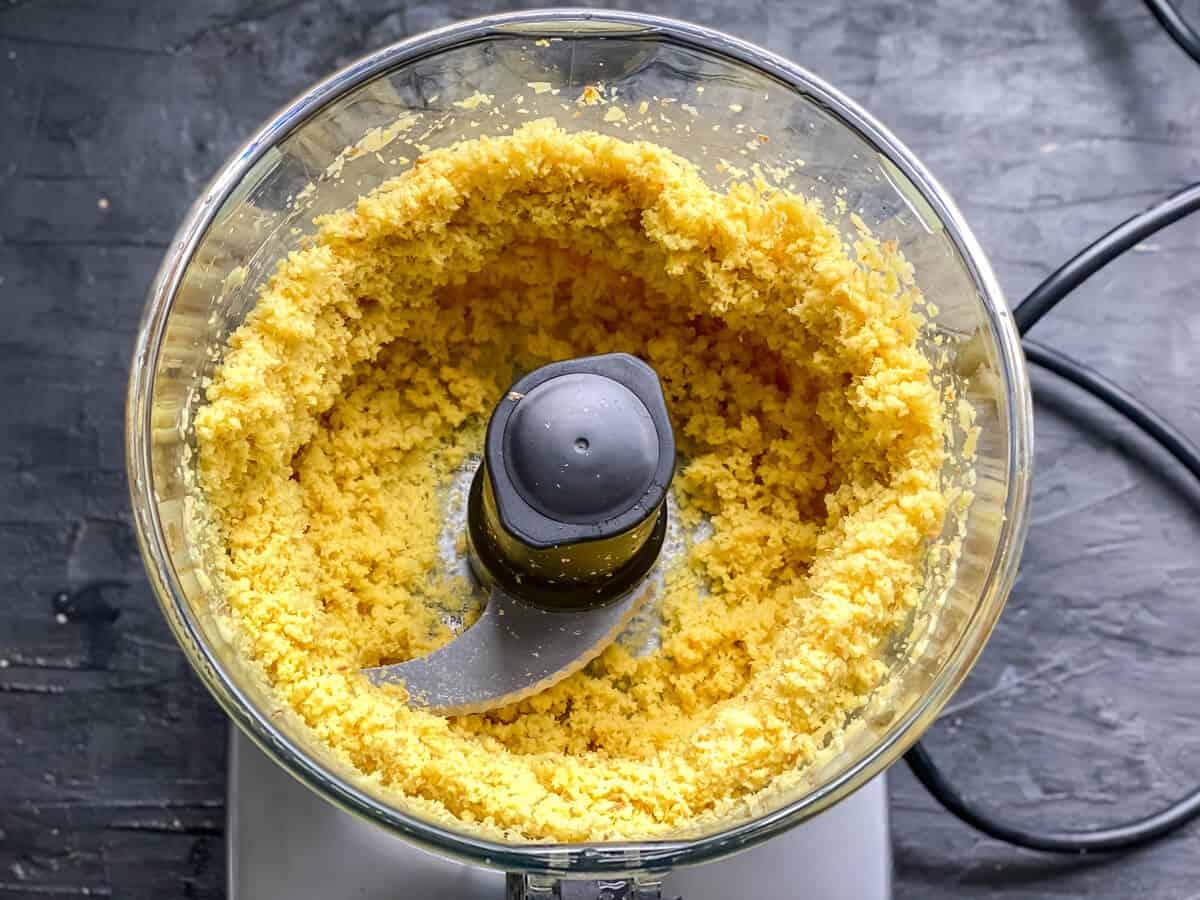
Where to purchase ginger and ginger paste
Ginger, in all of its forms, may be purchased from most large grocery chains and supermarkets. Fresh ginger will probably be present in the produce section, while minced ginger and ground ginger will probably be present in the spices and seasonings aisle.
You’ll be able to often find ginger paste in Indian stores, but they do have preservatives and additives to make them shelf-stable.
Reasons to make ginger paste at home
- More fresh and flavorful than storebought.
- It’s less expensive than store-bought too!
- While you make your ginger paste from scratch, you possibly can ensure that there are no additives or preservatives. The identical can’t be said for many store-bought versions.
- Prepping ginger paste upfront is a meal prep hack! No have to thaw; you possibly can add the frozen cubes on to your meal. This protects a lot time, without compromising flavor.
Here’s what you must make ginger paste
The way to pick ginger
When making homemade ginger paste, selecting the fitting fresh ginger root is crucial. Go for organic ginger if available; it’s known for its strong flavor and pungent flavor.
Select ginger roots with thin skin which might be smooth, firm, and without wrinkling or blemish. Be looking out for sunken sections or dark spots, as those indicate improper storage and spoilage.
Fresh, high-quality ginger must have a pleasing smell and be firm without being hard and woody.
Do you have to peel ginger before using it?
For those who are purchasing young ginger with very thin skin, you regularly is not going to have to peel it. Older ginger, or ginger that has been shipped and stored for an extended time period would require you to peel the toughened skin. It’s also a great idea to peel your ginger if it will not be organic, as any sprays could also be residual on the skin.
Organic ginger may be left unpeeled, but just remember to rinse and scrub the ginger to remove any loose dirt and ensure it’s cleaned well. Note: Leaving the peels on can provide it a grainy or rough texture.
The way to peel ginger
The best strategy to peel ginger is by cutting the foundation into manageable pieces and using a vegetable peeler. Since ginger roots can have odd shapes, cutting them into sections might help simplify the peeling process.
Pull the peeler towards you, running it under the skin of the ginger. If there are small pieces of peel left within the nooks and crannies of the ginger root, you should utilize a paring knife to remove them or leave them if the skin could be very thin.
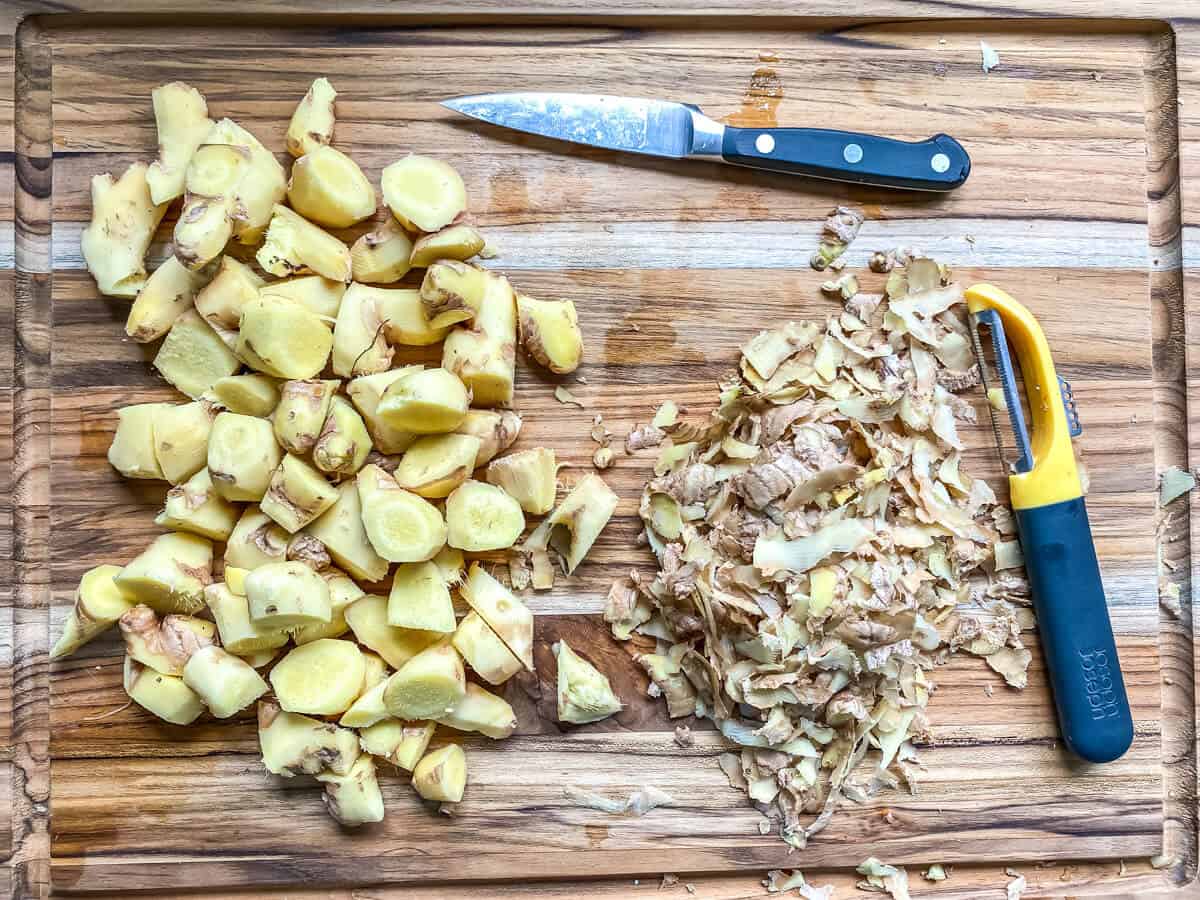
You’ll need a food processor or a high-speed blender to make a smooth paste.
Storage suggestions
Follow the steps below to preserve the homemade ginger paste
- Store within the refrigerator in an air-tight container for about 7-10 days. I like to make use of glass containers since the gingery smell is less complicated to rinse off.
- To preserve for 3-4 months, transfer the ginger paste to an ice tray (preferably with a lid to avoid freezer burn), leaving some space for expansion.
- Once frozen (will take about 6-8 hours), transfer it to a Ziploc or a reusable storage bag and store it within the freezer for as much as 6 months.
I exploit this silicone ice-cube tray to freeze the paste. It has a capability for about two teaspoons per crevice, but I fill around 1.5 teaspoons to permit the paste to expand.
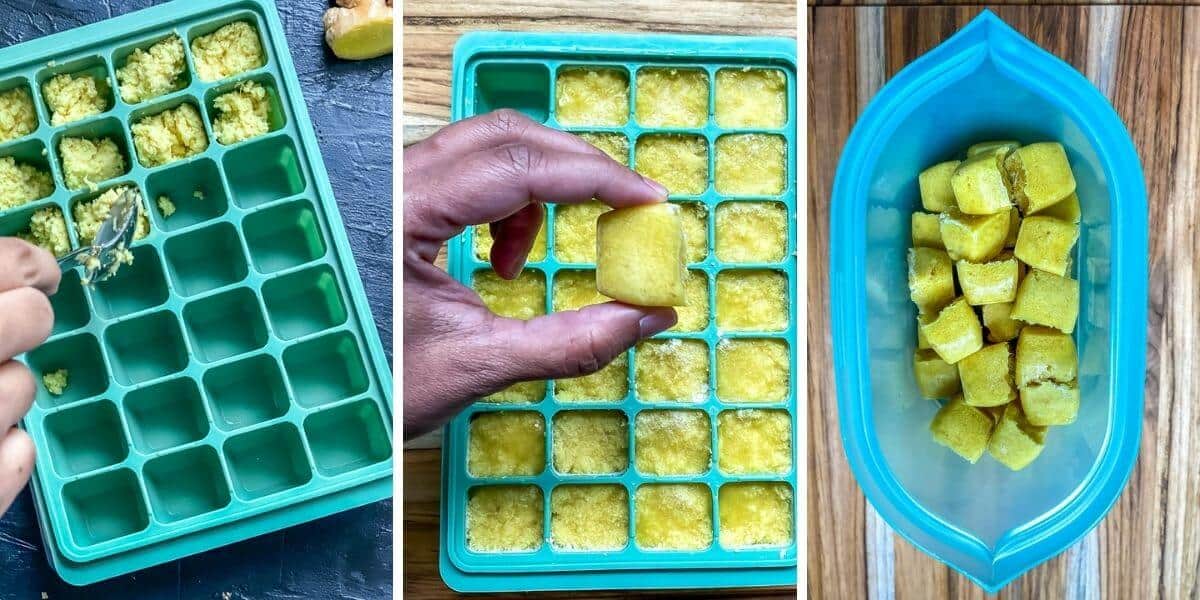
The way to use
You should utilize ginger paste in smoothies, ginger tea, curries, soups, or any recipe that calls for grated/minced ginger.
When replacing fresh ginger with ground ginger, keep in mind that 1-inch knob of ginger = 1 tablespoon of paste.
Depending on how you may have stored the paste (refrigerator or freezer), there are two ways to make use of the paste –
- Refrigerated paste: Replace a 1-inch knob of ginger with one tablespoon of paste.
- Frozen cubes: I exploit this silicone ice-cube tray to freeze the paste. It has a capability for about two teaspoons per mold, but I like to recommend you fill around 1.5 teaspoons to permit the paste to expand. For many recipes, one cube of ginger must be sufficient. No have to thaw before using.
Necessary: While using in curries, at all times saute the ginger in oil for a minute or two in order that the raw taste disappears. You don’t want your food to taste super gingery!
Indian recipes that use ginger
Many Indian recipes call for and use fresh ginger. Listed below are a number of of my favorite ways to make use of ginger:
Ginger paste substitute
In case your recipe calls for ginger paste and also you don’t have any available, there are a number of easy substitutes you should utilize as an alternative. For every tablespoon of ginger paste, you should utilize 1 inch of fresh ginger as a substitute, 1 tablespoon of minced ginger, or 1 teaspoon of ground or powdered ginger.
Making homemade ginger paste is completely well worth the effort. With its strong flavor and various health advantages, it’s a unbelievable addition to any meal. For times if you need each ginger and garlic in your meals, do that homemade ginger garlic paste – it is a big timesaver!
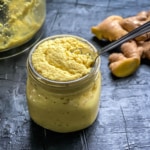
Click on the celebs to rate!
How To Make Homemade Ginger Paste
This easy recipe for homemade ginger paste uses just 2 ingredients and is a simple strategy to prepare fresh ginger in bulk for later use.
Pin
Print
Save
Email
- 1 lb ginger peeled and chopped
- ¾ cup water
Prevent your screen from going dark
Storage Instructions
-
Store within the refrigerator in an air-tight glass container for about 7-10 days.
-
Transfer the ginger paste to an ice-cube tray, leaving room for expansion.
-
Once frozen, pop the cubes out and transfer it to a Ziploc or a silicone bag and store it within the freezer for as much as 6 months.
- Peeling ginger is optional. You’ll be able to buy organic ginger, give it a great rinse, and use it without peeling. I exploit this straight peeler since it peels the skin off without taking chunks off the flesh.
- Chop the ginger into small pieces in order that it’s less work on your blender to puree it.
Disclaimer: Approximate dietary information is provided as a courtesy and may vary depending on the precise ingredients/brands used. If you may have health issues, please work with a registered dietician or nutritionist.
Serving: 1tablespoonCalories: 33kcalCarbohydrates: 5gProtein: 1gFat: 1gSaturated Fat: 1gSodium: 75mgPotassium: 72mgFiber: 1gSugar: 1gVitamin C: 4mgCalcium: 20mgIron: 1mg
Weight loss plan: Dairy-free, Gluten-free
Course: Basics
Method: Blender
Cuisine: Indian
This post was originally written on May 10, 2022, and was republished with additional information on Dec 14, 2023.


